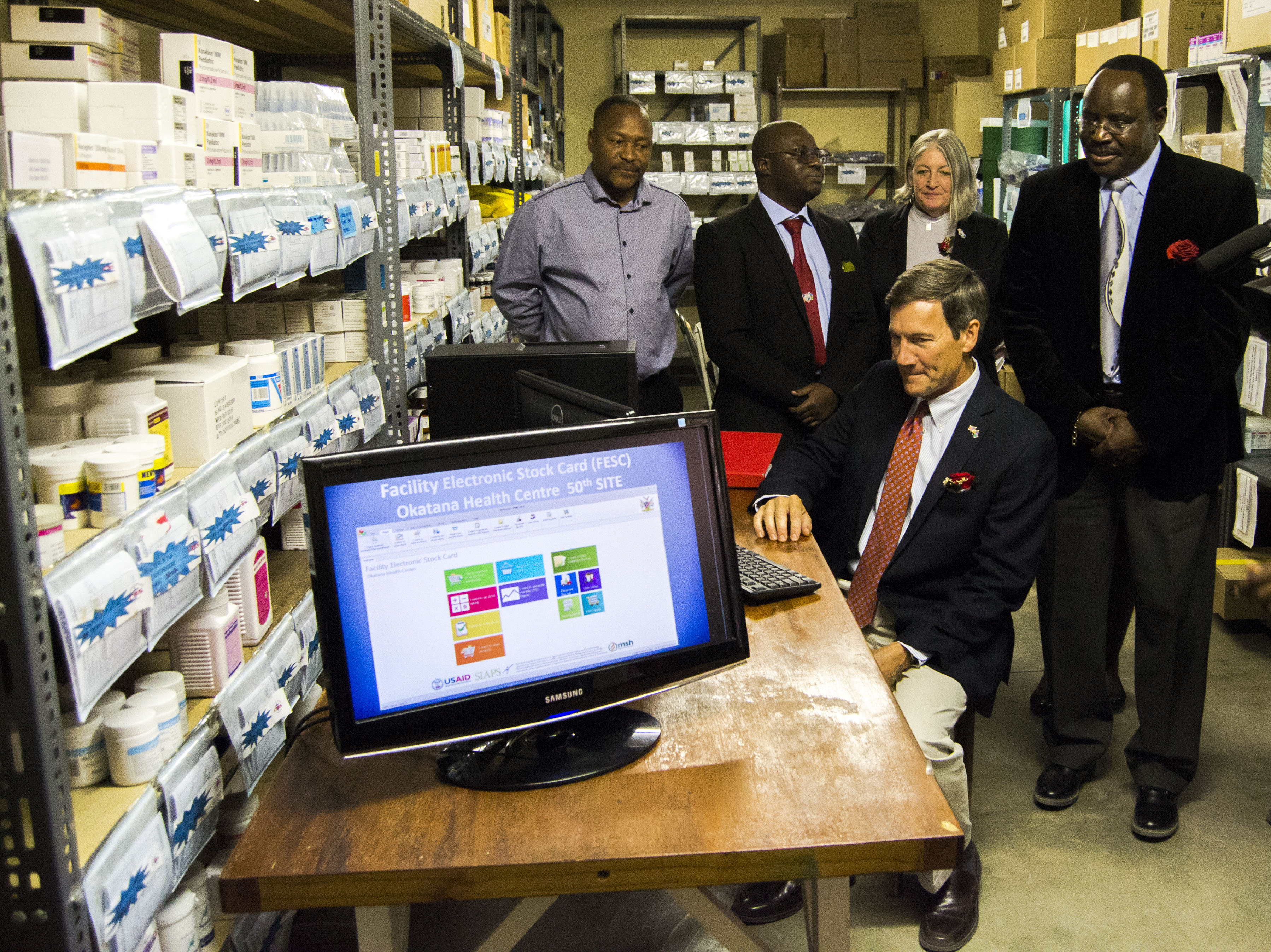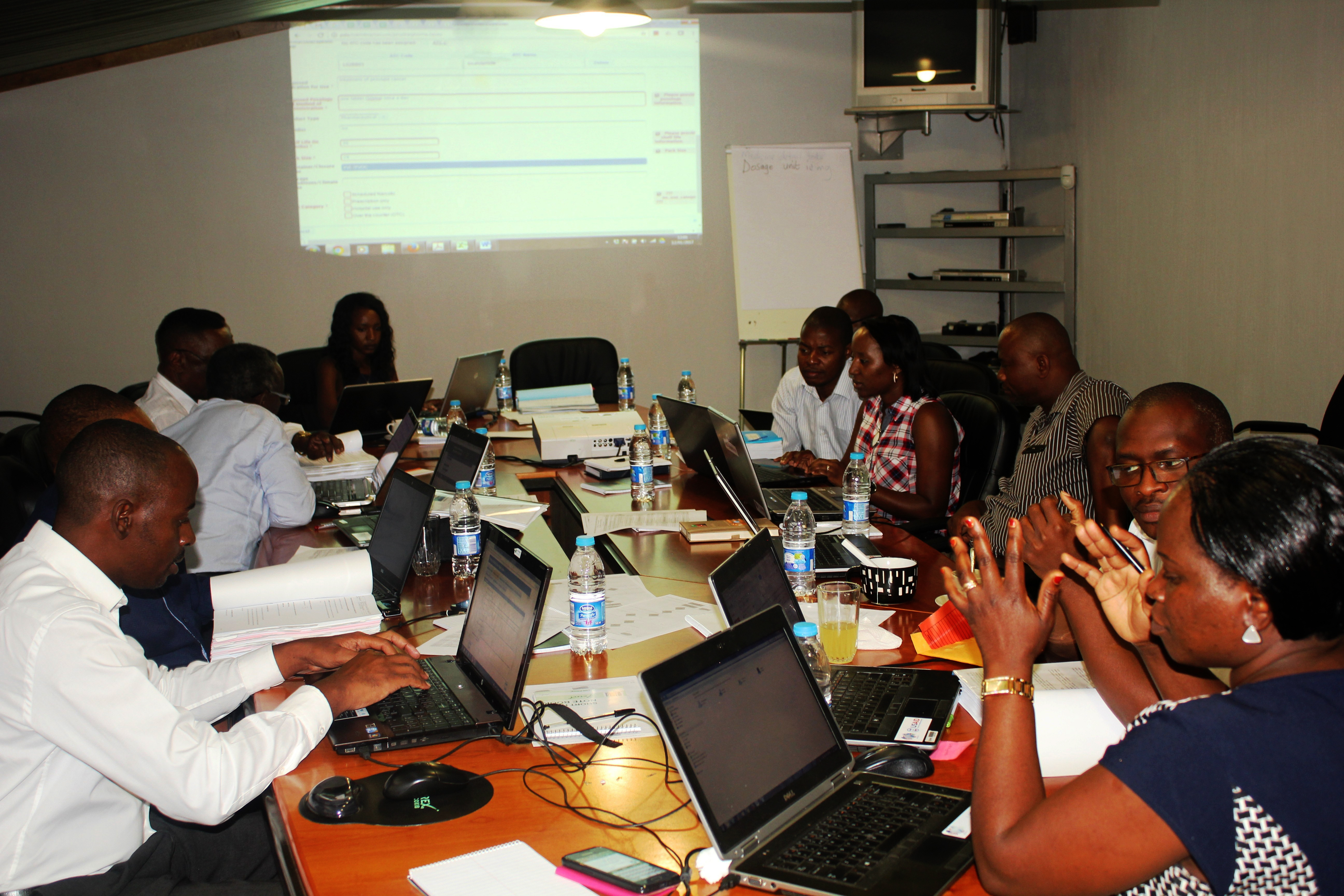Namibia had a prevalence of HIV infection of 17.2% in 2016. That rate of infection, coupled with the vastness of the country and a shortage of qualified pharmaceutical personnel, resulted in a critical need to strengthen health systems. Below are some highlights of SIAPS’ ongoing work in the country.
| Ensuring access to safe and quality ART |
| SMS reminders for ART patients Treatment interruptions can have dramatic consequences for patients on lifelong antiretroviral therapy (ART). SIAPS introduced automated cellphone reminders in Namibia to alert patients to pick up their medication. More>> |
E-health tool reaches a new milestone The US Ambassador to Namibia recently unveiled the Facility Electronic Stock Card (FESC) at the 50th health facility in the country. The FESC, adopted by the Ministry of Health and Social Services and supported by SIAPS, provides faster access to stock data and more accurate requisition orders. Inventory control tasks are more efficient—and staff can devote more time to patient care. More>> The US Ambassador to Namibia recently unveiled the Facility Electronic Stock Card (FESC) at the 50th health facility in the country. The FESC, adopted by the Ministry of Health and Social Services and supported by SIAPS, provides faster access to stock data and more accurate requisition orders. Inventory control tasks are more efficient—and staff can devote more time to patient care. More>> |
Improving ART services In 2017, 38 new pharmacy assistants graduated from Namibia’s National Health Training Center. Since 2007, SIAPS and its predecessor programs have supported pharmacy staff training programs and helped improve the overall quality of services. More>> In 2017, 38 new pharmacy assistants graduated from Namibia’s National Health Training Center. Since 2007, SIAPS and its predecessor programs have supported pharmacy staff training programs and helped improve the overall quality of services. More>> |
Powerful new medicines to help prevent new HIV infections The Namibian Medicines Regulatory Council approved the use of TDF/FTC, a drug for pre-exposure prophylaxis that could significantly reduce new HIV infections among high-risk groups. SIAPS used Pharmadex, a web-based tool, to facilitate the registration of this medicine. More>> The Namibian Medicines Regulatory Council approved the use of TDF/FTC, a drug for pre-exposure prophylaxis that could significantly reduce new HIV infections among high-risk groups. SIAPS used Pharmadex, a web-based tool, to facilitate the registration of this medicine. More>> |
| Ensuring easy access to patient and stock data The Electronic Dispensing Tool helps health workers manage both patients and antiretrovirals (ARVs), including providing early warning indicators of HIV drug resistance to ARVs. This tool also enables the identification of ART patients who default from treatment. More>> |


